
Just when San Francisco audiences were thinking the opera season was ending, a unique operatic experience is coming their way. Anyone who has been watching the news lately is aware of the cultural and political complexity of Hong Kong, and in a way, the city itself is a character in the 70-minute chamber opera Mila, which will be presented on Thursday evening, Dec. 12th at the Taube Atrium Theatre of the Diane B. Wilsey Center for Opera.
Hong Kong playwright Candace Chong Mui Ngam has come together with composer Eli Marshall to tell the story of a Filipina woman named Mila who has traveled far from home to work as one of the thousands of so-called “domestic helpers,” sometimes referred to as FDWs (foreign domestic workers).
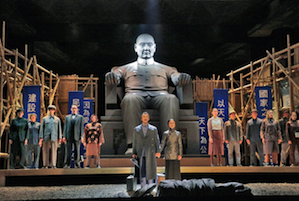
Playwright Chong’s libretto for the opera Dr. Sun Yat-sen was featured at Santa Fe Opera in 2014, but performances in mainland China were cancelled for unspecified reasons. Chong is a working mother of two, and employs her own domestic helper at home in Hong Kong. “In Hong Kong, we don’t have daycare, so a lot of us will have a domestic helper, if we can afford it, otherwise the elderly take care of the kids.” she said in a recent telephone interview. “I had my first helper in 2012, when my mother got sick. My son was 3 years old and at that time we had a domestic helper from Indonesia. I remember how awkward it was to have a stranger at home, and at the same time I knew she was a single parent and had a son in Indonesia who was only two or three years older than my son and would also be needing his mother. I didn’t want to kiss or hug my child in front of her because I felt so badly.”
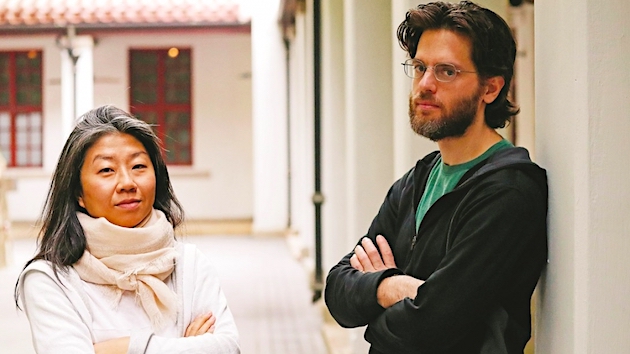
Chong credits much of the inspiration for this opera to the woman who, until recently, worked in her home, who also translated some of the work’s words into Tagalog. Another element of the story was drawn from a real event described in the book Strangers at Home, which depicts some of the struggles of domestic workers in Hong Kong. “The son of one of the workers got depression and hung himself in the Philippines,” Chong describes, “and the interviews with the mother cover some of her feelings. I was very sad reading this and the strong image of a son hanging himself at home and you are not able to help, it’s a tragedy, and it stayed in my mind.”
Another story element, that of the employer continually firing their helpers, happened in Chong’s own neighborhood. “One of my inspirations is from a crazy neighbor who keeps firing her domestic workers. And then she loves chatting about it, always victimizing herself saying, ‘the helper is so bad!’ And Milou,” who was Chong’s domestic helper, “talked to the woman’s helpers a lot, and she could tell it is the employer’s personality and not the helper’s problem. Also, she would make the helper go to a supermarket go a long, long way just to save 50 Hong Kong cents. (About seven U.S. cents.)
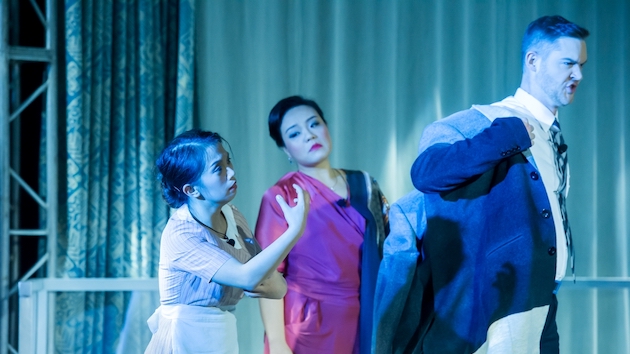
Of course, much worse happens to many of these people, as documented in the book mentioned, and in Mila’s case the tragedy back home is stark, but even when the employer is not overtly abusive, the injustice is inherent. “Even if one is used to such ideas at some psychological level, it doesn’t make sense, because it shouldn’t make sense, says composer Marshall. “It’s inhumane. And of course, it isn’t just in Hong Kong, and it isn’t just with Southeast Asian workers, but in Hong Kong it is very striking. But in that sense, it could be anywhere.”
The characters include Mila and the couple she works for, Sir and Ma’am, as well as the couple’s son. Ma’am is Chinese, Sir is an English speaker, and Mila, as are the majority of domestic workers in Hong Kong, is Filipina.
To help illuminate the presence of multiple families within one household, Marshall, in a way, created several families of instruments. The orchestra comprises a specially crafted percussion section, two pianos (one tuned a quarter-tone below pitch), and a clarinet with string trio.
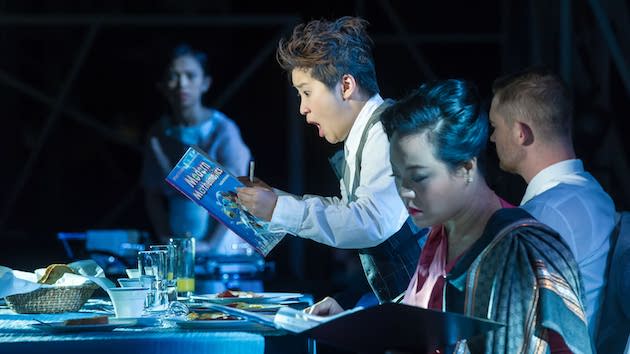
To understand the nuanced dynamics, Marshall says he spent an enormous amount of time with Chong’s libretto. “More time than she spent with it, arguably. I kept discovering layers of it. She thinks so profoundly of layers of meaning and implication. One example,” he says, “the boy character, who has one parent who’s a native English speaker and one parent who is a native Cantonese speaker, keeps falling back into English and keeps being told to speak Cantonese by his mother. I set his Cantonese essentially in arias, and it comes across as a struggle with the language and that being a part of his struggle with his family and his place in the world as a preadolescent. I’ve really come to respect the talents of a playwright such as Candace for the ability to weave all those elements of a story.”

The singers and musicians arrive in San Francisco on the heels of a performance of the work in New York, and also having performed the piece in Hong Kong. “It’s a great study in different types of soprano,” Marshall says of the three soprano roles. “The boy soprano could almost be a treble. The Ma’am character, I was expecting to be a mezzo at first, but having met Amanda [soprano Amanda Li sings Ma’am], I was thrilled to alter it. I don’t know if she’d call herself a spinto, but she’s got a rich, strong, powerful voice that has a lot of color, which is very distinct from Stefanie’s voice. [Soprano Stefanie Quintin sings Mila.] She might call herself a coloratura. Stefanie is a contemporary-music specialist and has been since her high school years, and she can sing any kind of music, very light but with incredible depth and power. She is an interesting artist in the full sense, and her endeavors in the Philippines are also laudable. She’s put together groups and operas and created her own milieu. Joseph Beutel [who sings Sir] is a mainstay in New York; he does everything with incredible dedication and talent. To have gotten them all together in one place, and now two places, it’s a confluence of stars in more ways than one.”
Rounding out the cast, Hong Kong-born soprano Joanna Shao sings the role of the boy and a second character, Rosa.
“Having three languages is fun and daunting at the same time,” Marshall says. “I’m not sure in which order.” Discussing maverick composer Harry Partch and the use of specially crafted percussion instruments, Marshall says, “I tip my hat to the late Dean Drummond who was one of the Partch students. I think it was 2011, he kindly allowed me to drop by Montclair University and take photos of the whole Harry Partch collection of instruments and listen in [during] a rehearsal. It was only one day but it was really informative to understand literally how these things are put together.” Marshall’s percussion section includes pots, pans, bottles, chopsticks, literally the sounds of the household servant’s labor.
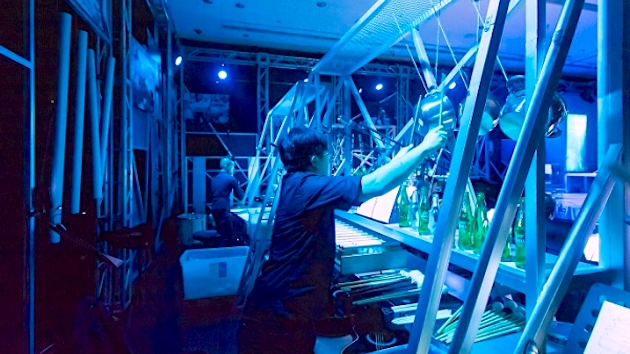
These days Marshall is based in Ithaca, where he is on the faculty at Cornell, but he lived and worked in Asia for many years, his interest dating back to his time at the Curtis Institute in Philadelphia, sometimes called the musical United Nations. “In those years, the late ’90s and early nulls, there were more students from mainland China than ever before,” he says. “I had some friends and a friend from China invited me to go there, and [I] was inspired to think about returning. I got a Fulbright fellowship in 2003 and that allowed me to go for a year and then I didn’t feel like leaving. It was sort of related to the Olympics, but not to do with the Olympics exactly. There was a sense of a huge society, a vibrant, already established art scene, multiple spheres, and classical music starting to think beyond some older models. Younger musicians were interested in all sorts of possibilities.”
Marshall also studied at Yale, at Hamburg’s Hochschule für Musik, and was a recipient of the Douglas Moore Fellowship for American Opera. At a practical level, Beijing was a great choice as a young artist. “Frankly, I loved being around that type of environment but also being able to live fairly cheap, to live a bohemian lifestyle while also being plugged in to the cosmopolitan atmosphere,” he says. “Unfortunately, that possibility didn’t stick around. After the Olympics, rent essentially quintupled in about five years. That was already the beginning of some difficulty for artists in Beijing but there’s still a huge critical mass of talent there.
For this performance, that talent extends to New York-based music director Neal Goren, who leads the Hong Kong New Music Ensemble. “Hong Kong talents are second to none,” he says. “Rhythms are very complex, very gnarly, and to do it on the spot is more than difficult, it’s almost impossible. But the Hong Kong players are so incredibly well-trained they just do it without worrying about it, without thinking about it, without complaining about it. The level of musicianship here is incredibly high.”

The story of the wealthy taking advantage of the poor is unfortunately universal and timeless, and yet there is more than one kind of poverty. “Her employers don’t have empathy,” Chong says, “but the domestic helper, Mila, who is less privileged, she has empathy toward the rich people. I think one of the reasons is her past experience, but when I think about the domestic helpers I meet in Hong Kong, even if they don’t have that sad an experience back home, they seem to have more empathy. Maybe it is because they have left their kids so they have that feeling toward these other kids instead of jealousy and hatred. Most of the time, I see empathy.”
Chong felt that it was interesting to put a character like Mila in an opera, “I feel opera as high art and the voice reminds me of the sacred. The first time I heard Mila’s character sing, I felt, ‘everyone has a voice.’ She is actually very sacred because they can bear the pain and difficulty.”
Mila is trapped by financial circumstance. As Chong explains, many foreign domestic workers borrow money to be able to afford to emigrate and simply cannot return until or unless they can pay the money back, creating a situation ripe for abuse. The larger backdrop of global economics and political strife are driving forces in the lives of these characters, and their creators. “It’s too bad I was pregnant the whole time so I couldn’t contribute much,” Chong says of the recent protests in Hong Kong, “but I went to two big demonstrations with two million people. My husband didn’t want me to go because I was so pregnant, but I think it’s a citizen’s responsibility.”
The phrase “chamber opera” could almost be considered an oxymoron. A chamber is intimate, while opera is grand, but that is where this art form has its greatest potential, to achieve an up-close and personal connection with singers living a story that is as big as the globe yet as small as a living room.
If there is such a thing as “holiday spirit,” it is that softening of the heart that is particularly present this time of year. Something akin to the empathy Chong speaks of, which allows us to see and care about the suffering of others. In that sense, despite the plethora of holiday offerings available, Mila just might just be the ideal holiday performance to attend.
There is a reception at 6:30, the opera begins at 7:30 and will be followed by a Q&A and discussion with the cast and creative team.





